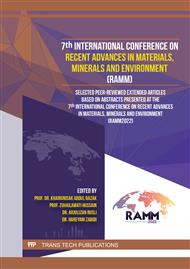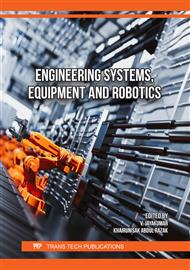p.33
p.41
p.51
p.57
p.67
p.73
p.79
p.85
p.97
Transforming Carbide Lime Waste into Marketable PCC: Effect of Mechanical Disturbance
Abstract:
The acetylene market is anticipated to be driven by the growing applications across numerous industries particularly chemical synthesis, oxy-acetylene welding, and metal cutting. Attributable to wide-range uses, acetylene witnesses stable growth in the global market. However, the production of acetylene results in increasing generation of carbide lime waste that is classified as a scheduled waste under Malaysian Environmental Quality Act: EQA 1974 (SW427) due to its high alkalinity. The rising amount of the waste has warranted the need for repurposing its usage to avert handling and disposal difficulties. In overcoming this crucial environmental issue, the carbide lime waste was transformed into a more marketable product so-called precipitated calcium carbonate (PCC) via feasible carbonation, promoted using natural sucrose solution. During the carbonation process, stirring rate was manipulated (i.e 300, 500, 700 and 1000 rpm) in investigating its effects on the PCC formation. Increasing the mechanical disturbance resulted in significant time reduction from 28 minutes to only 9 minutes and particle refinement. The production of PCC with purity above 98% suggested that the carbide lime waste was successfully transformed into high-grade PCC, which not only may help in preserving environmental sustainability yet can also offer profitable return to industry.
Info:
Periodical:
Pages:
67-72
Citation:
Online since:
February 2024
Price:
Сopyright:
© 2024 Trans Tech Publications Ltd. All Rights Reserved
Share:
Citation:



